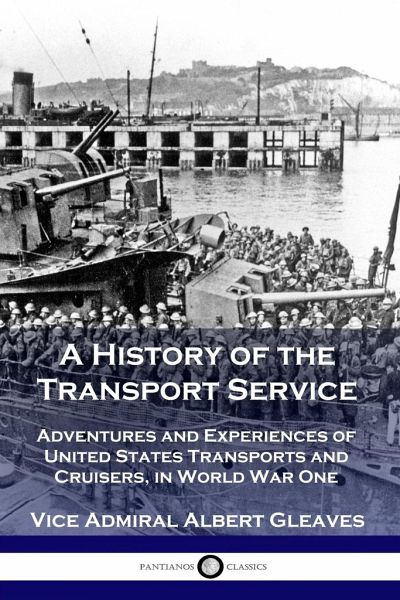
A History of the Transport Service
Adventures and Experiences of United States Transports and Cruisers, in World War One
Versandkostenfrei!
Versandfertig in 1-2 Wochen
15,99 €
inkl. MwSt.

PAYBACK Punkte
8 °P sammeln!
Vice Admiral Albert Gleaves offers his first-hand account of naval troop transports during World War One, showing how crucial these were to America's war effort. Once war was declared against Germany and her allies in 1917, vast amounts of manpower and war materiel had to be shipped from the United States to Europe. The enormous logistical challenge was hindered by the efforts of the German navy, in particular the U-Boat submarines and their notorious torpedoes. Gleaves' accounts are supplemented by those of his own officers and sailors, several of whom were sunk and barely escaped their stric...
Vice Admiral Albert Gleaves offers his first-hand account of naval troop transports during World War One, showing how crucial these were to America's war effort. Once war was declared against Germany and her allies in 1917, vast amounts of manpower and war materiel had to be shipped from the United States to Europe. The enormous logistical challenge was hindered by the efforts of the German navy, in particular the U-Boat submarines and their notorious torpedoes. Gleaves' accounts are supplemented by those of his own officers and sailors, several of whom were sunk and barely escaped their stricken vessels alive. The sailors of the U.S. Navy Transport Service were both wily and brave; charting a safe course across the Atlantic Ocean and avoiding or diverting confrontation was a difficult business - each ship usually carried hundreds of men bound for the front. Despite setbacks and misfortunes, the Allied naval effort steadily grew in size: by the conclusion of the war in November 1918, around two million soldiers plus enormous quantities of munitions, fuel and weaponry had been successfully ferried across the high seas.












